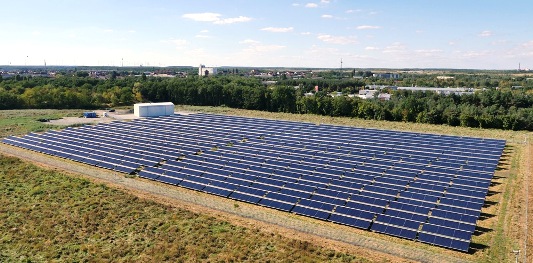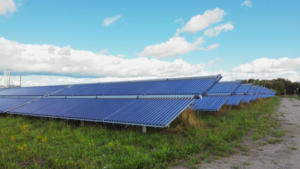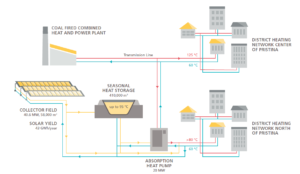Germany: First Record-Size Solar District Heating Plant in 11 Years
September 27, 2016
Friday, 23 September 2016, was the inauguration date for the now largest solar thermal collector field in Germany. Since August, 8,300 m² of vacuum tube collectors (5.8 MWth) set up in the town of Senftenberg, 140 km south of Berlin, have been feeding energy into the municipality’s district heating network. The previously largest field since 2005 – a 7,100 m² flat plate collector installation (5.1 MWth) – is located in the southern German town of Crailsheim. The new Senftenberg solar field was designed, manufactured and implemented by German system integrator Ritter XL Solar. The 1,680 collectors, the heat transfer unit and around 6,600 m of pipework were installed within record time: All in all, the project took only six months. The general contractor for the EUR 4.5 million investment was Berlin-based E&G Energiebau, which had received support from the Integral Project, the company responsible for sizing and integrating the solar heat into the existing network.
Photo: Stadtwerke Senftenberg
Detlef Moschke, Managing Director of Stadtwerke Senftenberg, the municipal utility, had been pleasantly surprised by the good performance of the installation right after it had gone into operation, he said during a video interview conducted on the day the system was inaugurated. “Without the German KfW bank’s financial support of 40 % of the investment costs, the project would not have been realised. The technology is still expensive and we would not have been able to offer solar heat at competitive prices compared to energy from gas-fired boilers,” Moschke said.
As part of the invitation to tender, Senftenberg’s municipal utility asked for a plasma vacuum tube collector field from Ritter “or at least an equivalent technology”, because it promised the highest yield per square metre. The collector field set up on a re-cultivated landfill area is thought to feed 4 GWh of solar energy into the district heating network per year, which corresponds to a specific yield of 482 kWh/m². During the summer months, the plant is designed to cover the entire hot water demand of the around 3,000 households connected to it.
The special feature of Ritter´s system is the water replacing the glycol in the collector field, as water boils at stagnation temperatures without loosing its effectiveness later on. “The anti-freeze protection of having water float through the collector field during nights with temperatures below zero degrees [Celsius] wastes less than approximately 1 % of the annual yield of the plant,” Martin Willige, Key Account Manager at Ritter XL Solar, explained. “What’s more, the district heating network with its 2,000 m³ of water is used as a buffer storage for excess heat in summer.” Hence, the solar field does not need any additional storage tanks. To make this work, the heat transfer unit next to the collector field is connected to both main pipes of the district heating network – the north and the south one. During normal operation, the solar heat enters the feed line operated at temperatures of about 85 °C in summer and up to 105 °C during the coldest days in winter. However, it can switch to an alternative operation mode on its own and utilise the solar energy to preheat the return line in the morning and evening, provided that the field does not exceed feed line temperatures.
Websites of companies mentioned in this article:
http://www.stadtwerke-senftenberg.de/ (in German)
http://www.energiebau-berlin.de/ (in German)


